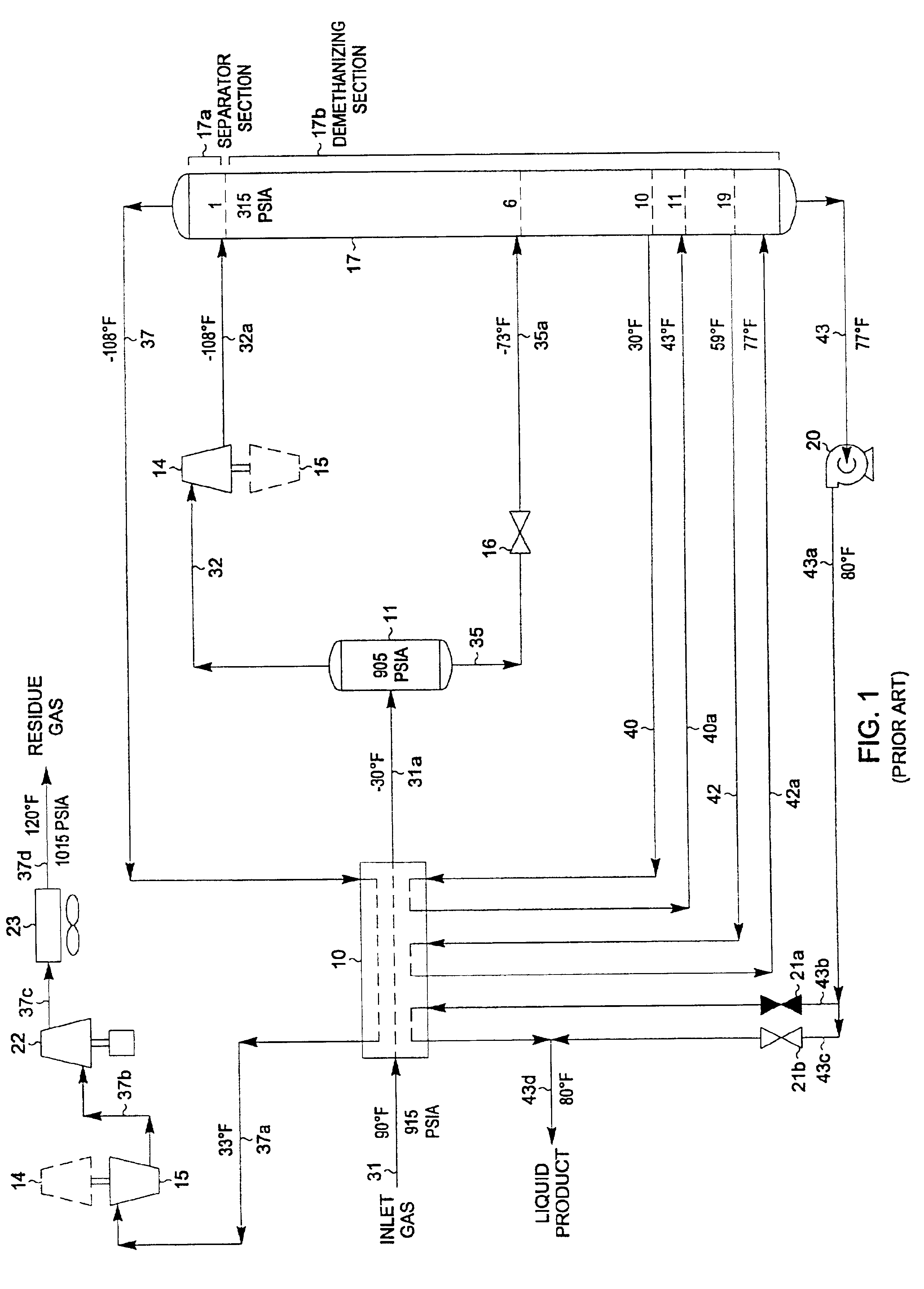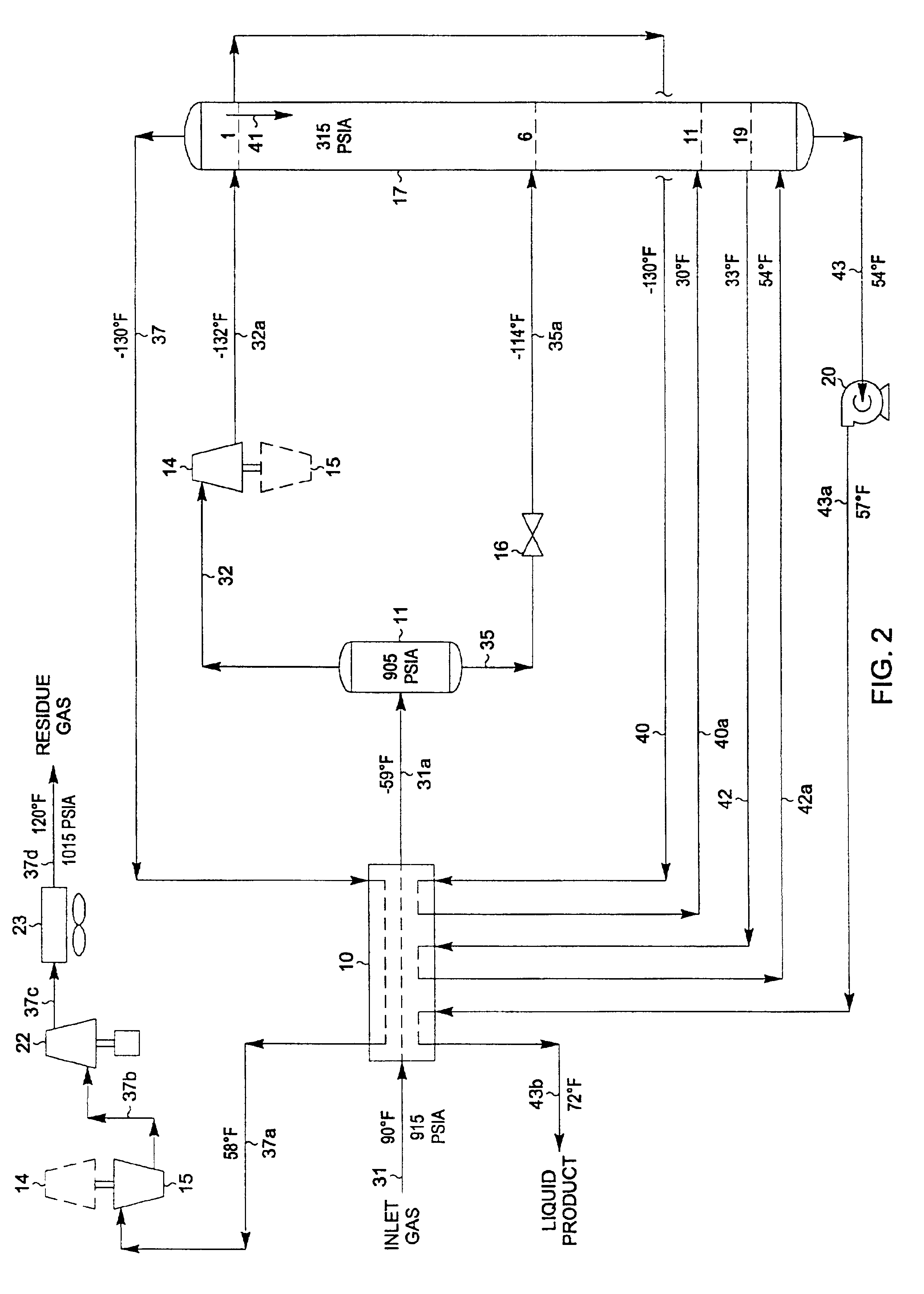Hydrocarbon gas processing
a technology of hydrocarbon gas and processing equipment, applied in the direction of liquefaction, gaseous mixture working up, lighting and heating equipment, etc., can solve the problems of not only the capital but also the operating cost of the plant, and the inability to use feed gas cooling in the heat exchanger
- Summary
- Abstract
- Description
- Claims
- Application Information
AI Technical Summary
Benefits of technology
Problems solved by technology
Method used
Image
Examples
example
[0037]FIG. 2 illustrates a flow diagram of a process in accordance with the present invention. The feed gas composition and conditions considered in the process presented in FIG. 2 are the same as those in FIG. 1. Accordingly, the FIG. 2 process can be compared with that of the FIG. 1 process to illustrate the advantages of the present invention.
[0038]In the simulation of the FIG. 2 process, inlet gas enters at 90° F. and a pressure of 915 psia as stream 31. The feed stream 31 is cooled in exchanger 10 by heat exchange with cold residue gas at −130° F. (stream 37), demethanizer liquid product at 57° F. (stream 43a), demethanizer reboiler liquids at 33° F. (stream 42), and a portion of the liquids from the upper section of demethanizer column 17 at −130° F. (stream 40). The cooled stream 31a enters separator 11 at −59° F. and 905 psia where the vapor (stream 32) is separated from the condensed liquid (stream 35).
[0039]The condensed liquid (stream 35) from separator 11 is flash expand...
PUM
| Property | Measurement | Unit |
|---|---|---|
| mole percent | aaaaa | aaaaa |
| mole percent | aaaaa | aaaaa |
| mole percent | aaaaa | aaaaa |
Abstract
Description
Claims
Application Information
 Login to View More
Login to View More - R&D
- Intellectual Property
- Life Sciences
- Materials
- Tech Scout
- Unparalleled Data Quality
- Higher Quality Content
- 60% Fewer Hallucinations
Browse by: Latest US Patents, China's latest patents, Technical Efficacy Thesaurus, Application Domain, Technology Topic, Popular Technical Reports.
© 2025 PatSnap. All rights reserved.Legal|Privacy policy|Modern Slavery Act Transparency Statement|Sitemap|About US| Contact US: help@patsnap.com



